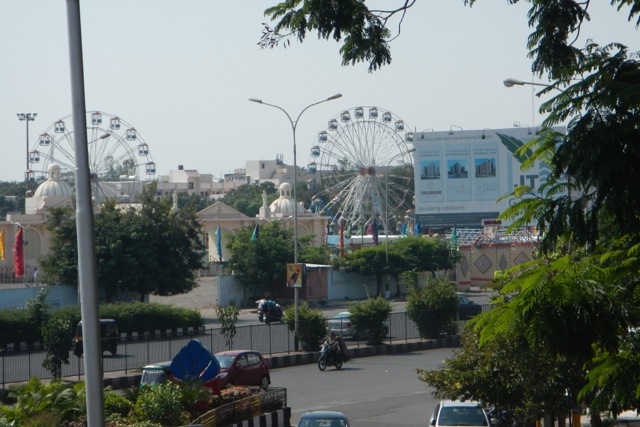
 If you like sparkling diamonds and saffron saris, you will love Surat, India’s bustling, no-nonsense city, some 250 kilometers north of Mumbai, near the Arabian Sea. If you’re wearing a new diamond, there’s an 80% chance its was shaped by Surati hands (and laser beams too). And nearly every Indian has something in the closet from Surat—which is what you’d expect from a city whose clattering looms churn out 30 million meters of raw fabric a day.
If you like sparkling diamonds and saffron saris, you will love Surat, India’s bustling, no-nonsense city, some 250 kilometers north of Mumbai, near the Arabian Sea. If you’re wearing a new diamond, there’s an 80% chance its was shaped by Surati hands (and laser beams too). And nearly every Indian has something in the closet from Surat—which is what you’d expect from a city whose clattering looms churn out 30 million meters of raw fabric a day.
But Surat, with a population of 4.5 million, faces big challenges too. Its proximity to the Tapti River delta—a strategic advantage in trade—also makes Surat a flood magnet. In the last 20 years, the city has been drowned by three major floods caused by emergency releases from an upstream dam. Lesser floods, caused by hard rains, occur more frequently, interrupting local business and displacing families living in flood plains. In 1994, a flood like that led to an outbreak of the plague. In addition, tidal surges moving up the mouth of the Tapti River threaten the city from the oppositedirection. Even on calm days, high tides push salt water into parts of the river needed for drinking. All of these problems will be made considerably worse by climate change, whose effects include stronger downpours and rising seas.
For these reasons, Surat has developed a “City Resilience Strategy” focused on adapting to climatic change. The initiative is supported by the Asian Cities Climate Change Resilience Network (ACCCRN), an organization launched in 2008 and funded by the Rockefeller Foundation. ACCCRN supports adaptation work in ten cities, including three in India. (I’ll tell you about another, Gorakhpur, in a future post).
Because Surat is seen as a leader among ACCCRN projects, I was eager to see what the city was doing and how its work might be replicated. I spoke with city officials, business leaders, and public health experts. I perused the aeration basins of a water treatment plant, climbed the floodgates of a major river embankment, and threaded my way through a township built to replace a flood-prone slum. I even toured a state-of-the-art diamond-polishing facility because—well—when would I get to do that again?
 In just a few years, Surat has accomplished quite a bit. With the help of outside experts, the city has assessed the climatic risks in flood management, energy, and public health. It has even mapped the social vulnerability of neighborhoods in terms of social cohesion, education, and class. The city is implementing a new early warning system for major floods and designing an inflatable dam to protect the river from saltwater intrusion.
In just a few years, Surat has accomplished quite a bit. With the help of outside experts, the city has assessed the climatic risks in flood management, energy, and public health. It has even mapped the social vulnerability of neighborhoods in terms of social cohesion, education, and class. The city is implementing a new early warning system for major floods and designing an inflatable dam to protect the river from saltwater intrusion.
Almost all of this work has been accomplished through a flexible and relatively loose network of public officials, business people, and community members organized around one compelling environmental goal. (I’ve written about the promise and pitfalls of such networks in the context of adaptation here.)
It’s impossible to know at this early stage how effective this experiment with “green governance” will be. Surat, one of the fastest growing cities in the world, suffers from a shortage of affordable housing, rampant sprawl in flood zones, and the complete absence of public transportation.
And I wonder how easily its resilience strategies can be duplicated elsewhere in the country. Before you get to green governance you need good governance, and that, in some quarters, is as elusive as a Bengal tiger. And note that Surat is a comparatively wealthy city. Its reliance on foreign trade and investment is one reason the business community has been such a strong supporter of expensive infrastructure.
Still, I admire the speed and efficiency with which Surat has marshaled its resources. And the commitment of city officials and other advocates I met can only be described as diamond-hard.
Robert Verchick, Gauthier-St. Martin Chair in Environmental Law, Loyola University, New Orleans. Bio.
| Be the first to comment on this entry. |